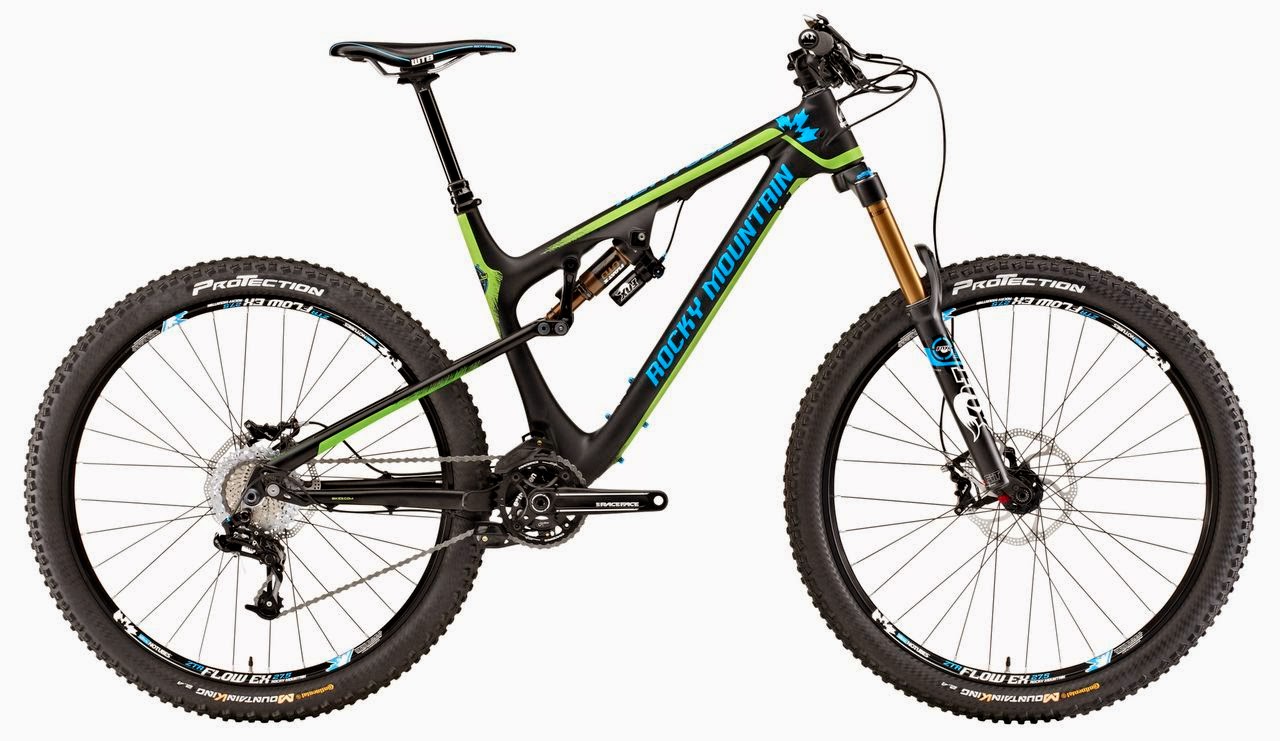This shock is amazing:
This shock is also amazing:
There are some applications where an inline air shock will overheat. There are some applications where the damping offered in an inline air shock is not sufficient. In reality though, you suck, and there's a 98% chance you do not have either one of those problems. Having spent a lot of time on inline and reservoir shocks, I have been completely blown away by the performance of both. After riding both, I couldn't care less which one is on my bike.
I know the reservoir shock looks bigger, cooler, and newer and I understand those three qualities could constitute a sales pitch in and of themselves for the lemmings who want to justify another expensive upgrade in the hopes their life will stop sucking. It won't.
Fun Fact. New tech doesn't change this.
Generally speaking, reservoir air shocks have all that same stuff, but in a slightly different arrangement. [Editor's note: this part is still true]
Educate yourself:
http://www.pinkbike.com/news/FOX-34-TALAS-FLOAT-X-FIRST-IMPRESSIONS.html
http://www.pinkbike.com/news/rockshox-monarch-plus-RC3-2010.html
If you are this guy and you plan on racing the Elite Men's Downhill World Champs on your trail bike, you should probably think about a reservoir shock:
If you bought a bike with more than 160mm of travel, you should probably consider a reservoir shock:
Other than those situations, you're probably going to discover that an inline air shock, when combined with a good suspension design, modern geometry, and a well-damped fork, can provide levels of performance that were literally unthinkable on anything less than a full-on downhill bike more than a couple of years ago.
There's also the issue that all real suspension tuning on air shocks happens in the shim stack and IFP, and all that tuning happens at the factory, reservoir or not. Turning knobs doesn't change the factory settings. Given that fact, an inline air shock that's properly tuned at the factory for your bike, weight, and riding style is probably going to ride worlds better than an expensive off the shelf reservoir shock with a general "all-applications" tune.
This is just the "evolution" level damper, but I think you get the point. This jive has more to do with shock performance than you know.
The modern 120-160mm trail bike is a marvel of evolution, and the geometry, brakes, suspension, tires, wheels, gearing, weights, handlebar widths, stem lengths, axle sizes, and seatposts available on them allow people to do *almost* everything that can be done on a mountain bike, all on the same bike. And if you're having problems getting rad on your trail bike, I'm almost positive it's not because the layout of your air shock is inline.
At this point, product managers are spec'ing these big boy shocks more to dress up their bikes in the current Enduro uniform de jour than to aid performance. I guaran-frickin-tee that in a blind test no customer would ever know the difference between this bike with a factory-tuned Float CTD and a factory-tuned Float X if they were both set to proper sag and rebound adjustments.
Putting a little extra oil in the rear shock and moving the IFP to a different location doesn't magically make the old design unrideable.

+copy.jpg)









7 comments:
Twin Toooobz bro!!
Hey Chaz- I agree with you on all points (mostly that airshocks are pretty fucking good, and if you can ride one- you can't ride), but a few things to nitpick...
In a basic shim damper LSC is controlled by orfice bleed size and HSC is controlled by the stack. There isn't really a separate stack for either one. Low speed oil goes through the hole, and high speed oil blows the shims open. CCDB is different as there is a base shim stack, then separate valves to control each motion.
Also the IFP pressure doesn't provide position sensitive damping in a shim damper shock except those with boost valve or similar. All IFP does in non-boost shocks is add spring force (which can be plenty effective for controlling bottom out).
I find it ridiculous that most people pay all their attention to the damper, when the airspring is doing 90% of the work. Literally the spring is producing 10x the force that your damper does. The shape of the spring force curve is more important than any damper curve... Look at the spring curve for this new CCDB air thing. Turd Sandwich.
I wish I could agree with you, but having blown out (and subsequently sent back to Fox to warranty) the Fox Float CTD on my Heckler three times in just over a year (the last time happened 25 days after I got it back from Fox). And this is after I have regularly maintained it. I've even tried to add more pressure than normal to keep me from sagging much more than 20% and managed to blow it.
However, I like big jumps, getting freaky and over/under shoot the occasional drop and land flat.
An inline shock does not work for me.
I specified that shock on that particular Altitude. If you do your research, you would find that the Rally Edition Altitude is a race specific model with hardware upgrades that are better suited to racing. The Float X, with larger oil volume and better HSC damping, is one example of a suitable race upgrade over the similarly priced yet differently spec'd non race version. If you can't feel the difference in performance, I suggest you will be satisfied with the non-race version.
So what you're saying then, Ken, is that I can't race on the non-race non-resevoir shock? Thus stating exactly the nonsense the article is pointing out. Thank you for your accidental validation
Non-race vs. race is the distinction between one model that is "better suited" for racing than another. Good try though.
Thank you for your accidental validation
http://youtu.be/x6nR4NaI_C0
Post a Comment